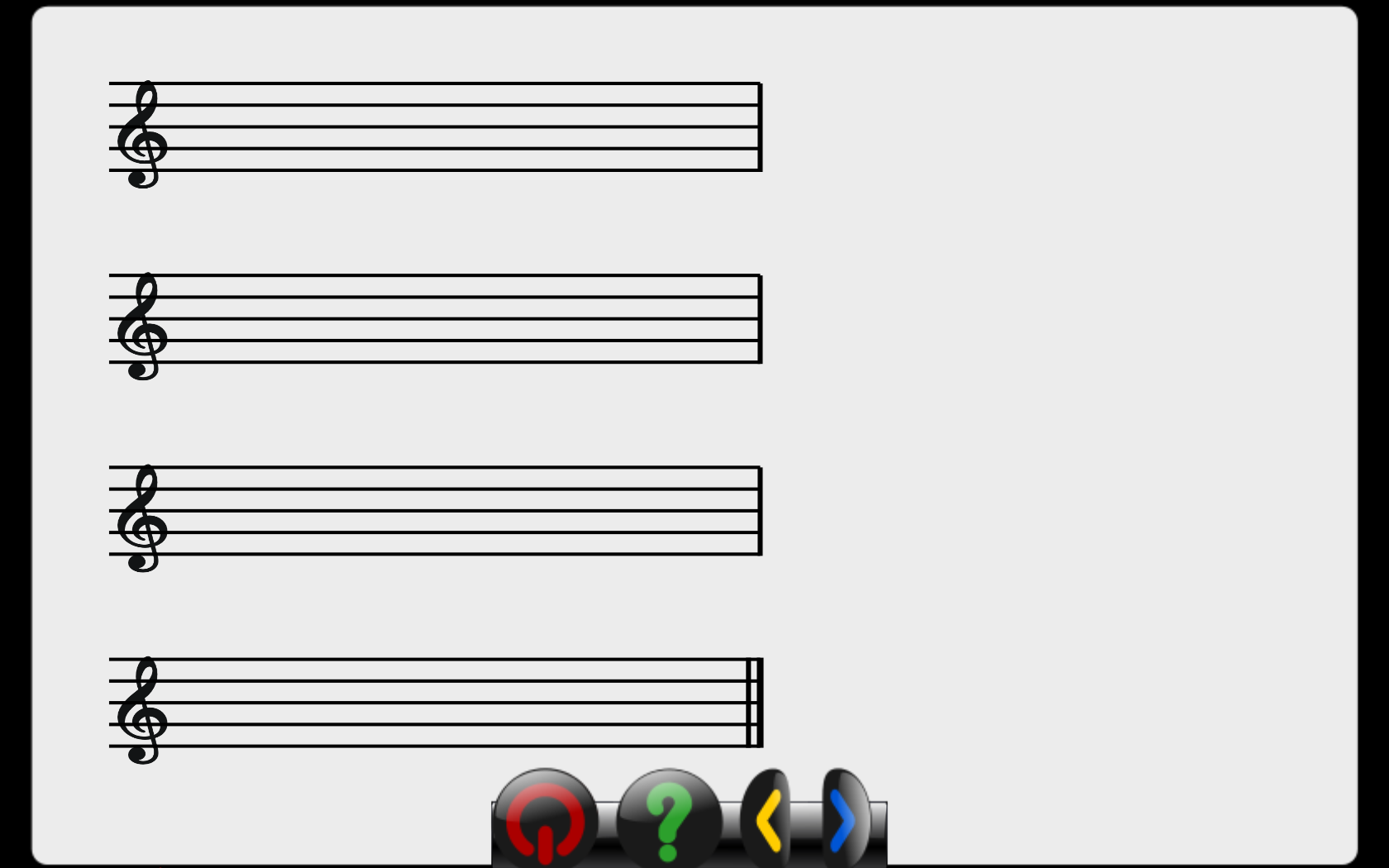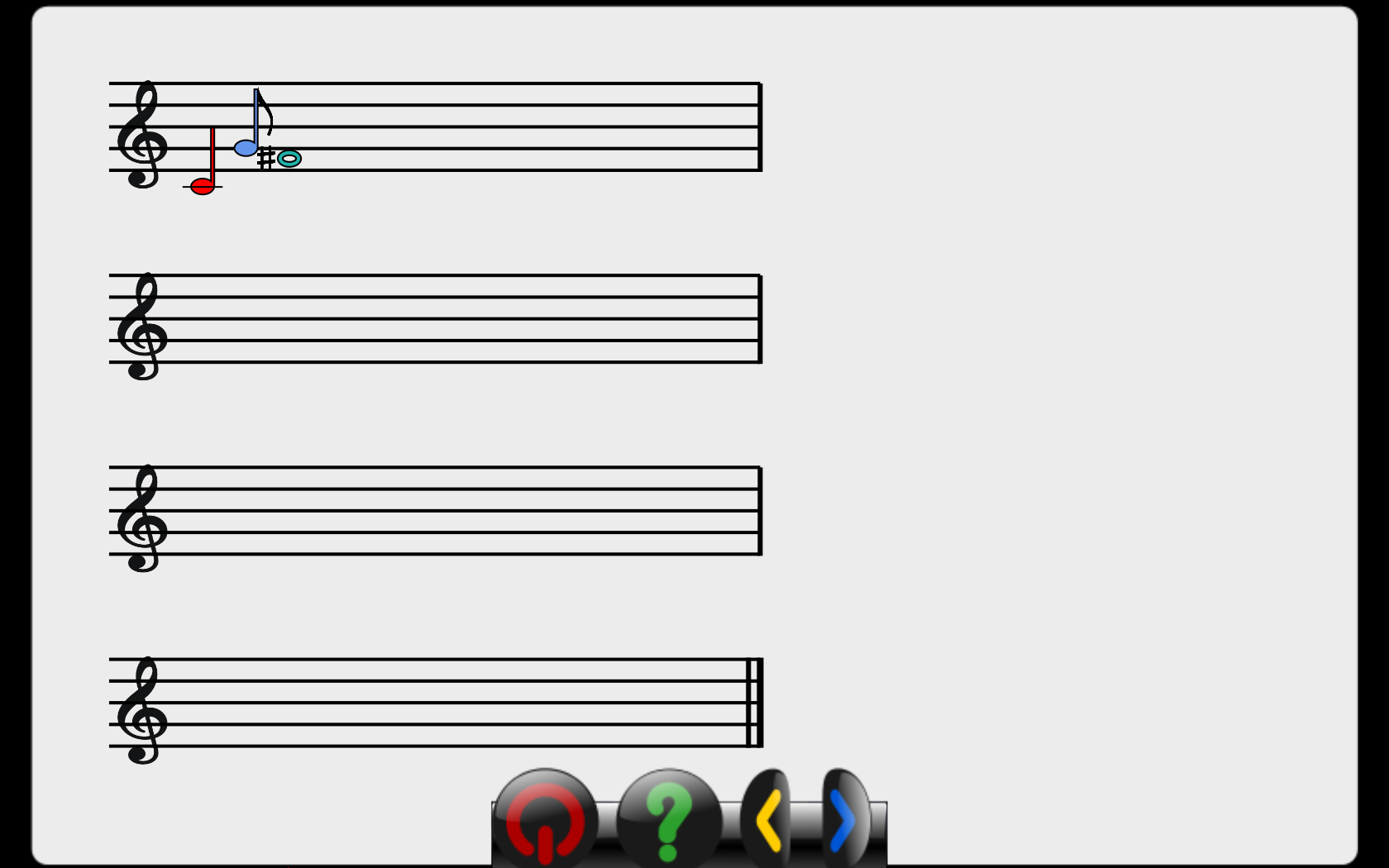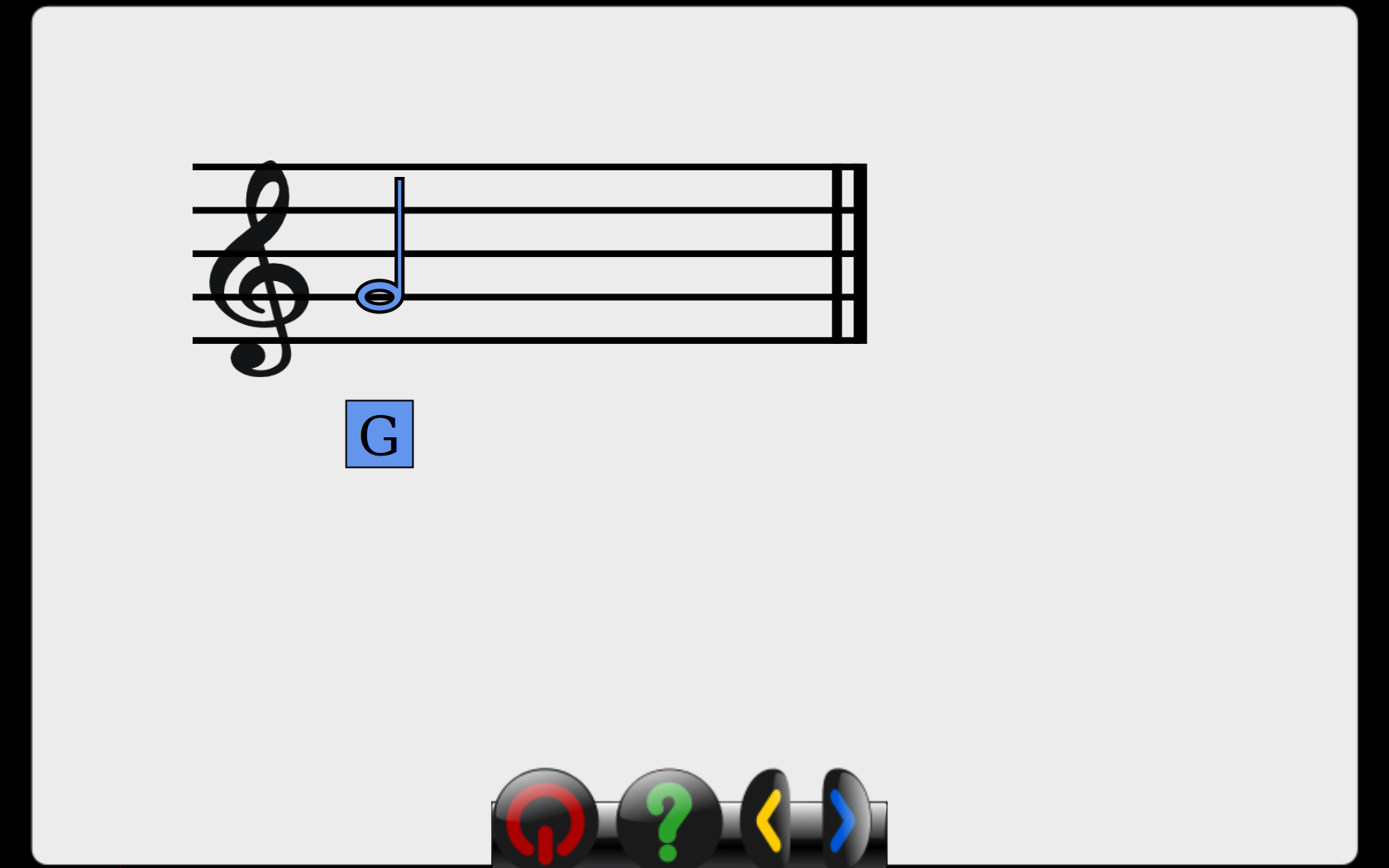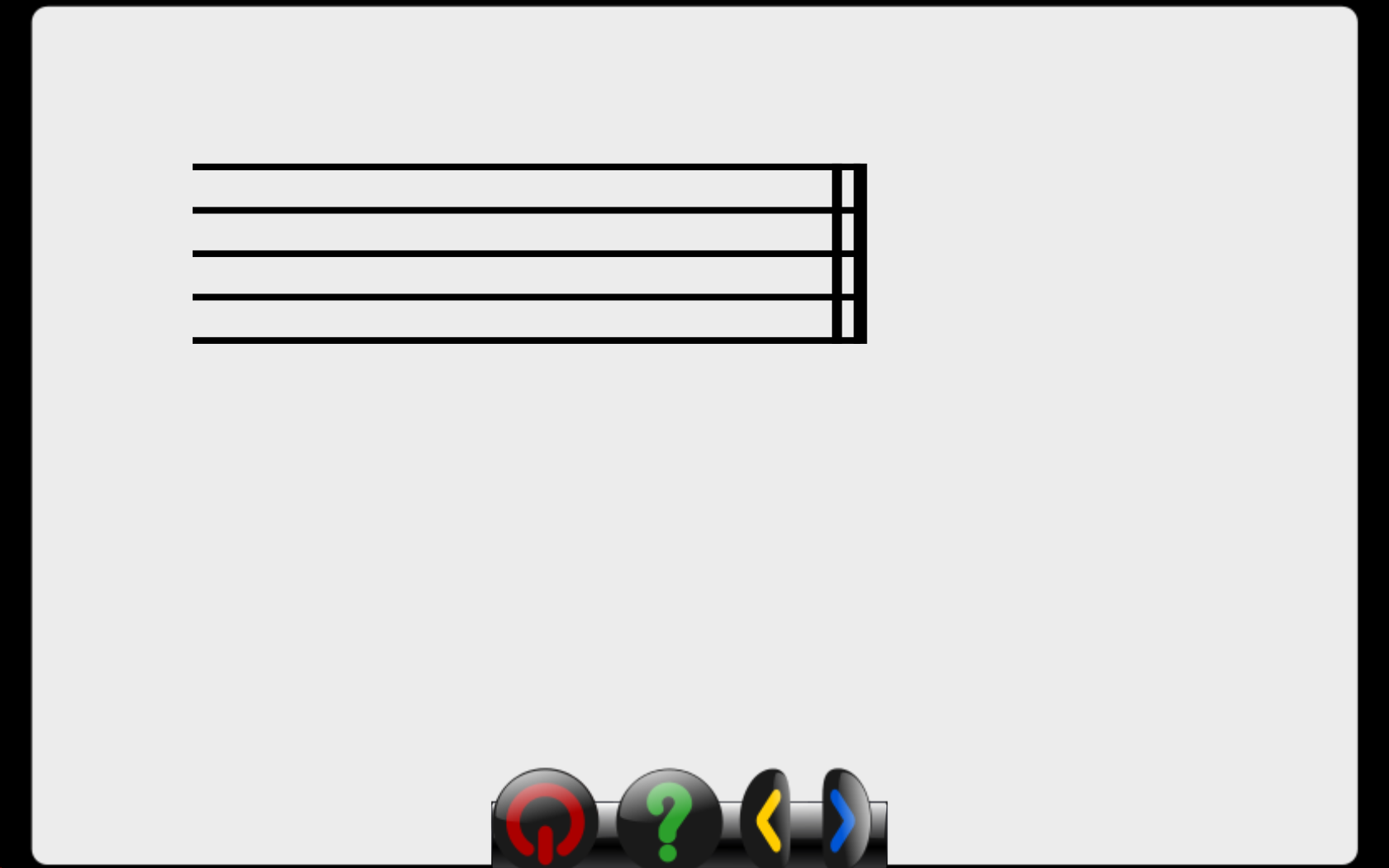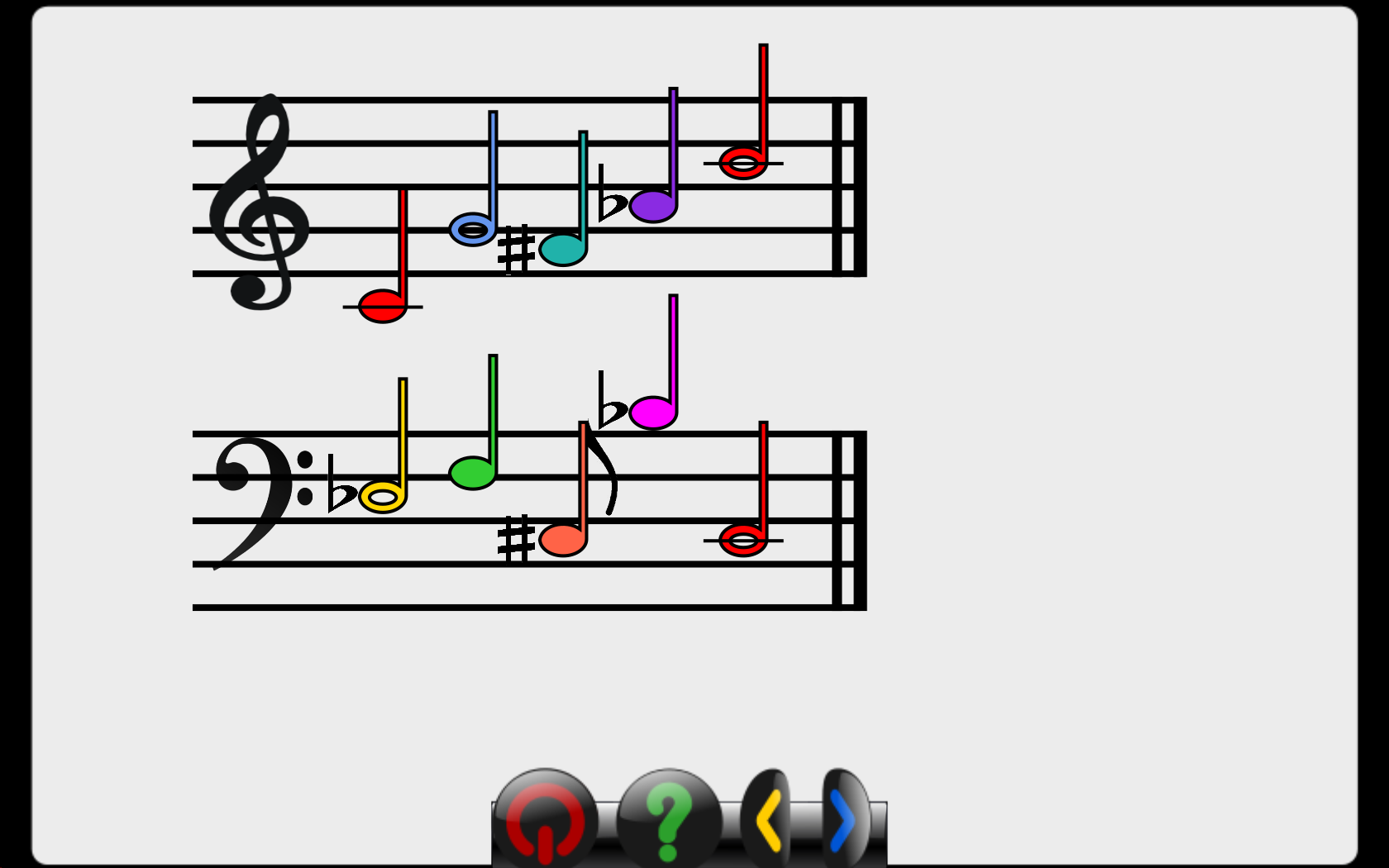Adding a music activity and using gcomprismusic.py module
If you wish to add an activity relating to music to gcompris, consider importing the module gcomprismusic.py This module contains several useful classes of objects that will not only make it easier for you to make your activity, but also help GCompris maintain a more uniform music platform.
The following music objects are currently included in the module:
- Piano Keyboard
- Music Note
- Eighth Note
- Quarter Note
- Half Note
- Whole Note
- Musical Staff
- Bass Clef
- Treble Clef
The module was developed in 2012 by Beth Hadley through Google Summer of Code. It can always be improved, added to, and adjusted.
The documentation provided below will help you get started using the module. It provides coding examples, with pictures, that will help you create music objects.
Beth Hadley welcomes comments, ideas, contributions, and questions regarding the gcomprismusic module or GCompris music activities. Send her an email at bethmhadley@gmail.com
Contents
How to import the gcomprismusic module
The gcomprismusic.py module is located in the piano_composition-activity. There are certain resources that support the module, and these are permanently located under the resources folder of the piano_composition activity. Thus, you must execute the following instructions to properly import the gcomprismusic module.
- create your new activity (see Beginner if you need help)
- open init_path.sh and find the
pythonplugindirline. Replace this line with something like:pythonplugindir=$path/../piano_composition-activity:$path/../name_of_your_activity-activity
save and close this file - add a resources folder to your activity folder
- create a symbolic link in this resources folder that references the piano_composition resources file. If you are unsure of this step, just go into the play_piano activity folder, click on resources, and copy the
piano_compositionfolder and paste that into your resources folder - open the python file for your activity,
name_of_your_activity, and find at the top where all the import statements are. add the following line to the import statements:from gcomprismusic import *
- run your activity, and ensure that it works (you should see a screen that says "This is the first plugin in GCompris coded in the Python Programming language." If there are errors, enjoy troubleshooting or contact Beth.
- Each note is assigned a number, stored internally as
numIDThis is to prevent issues with converting between different language translations of note names. Each note is also assigned a color, according toNOTE_COLOR_SCHEMEThe following table represents this:English Name Northern European Name numID Color C C 1 C sharp / D flat (C♯ / D♭) Cis / Des -1 D D 2 D sharp / E flat (D♯ / E♭) Dis / Es -2 E E 3 F F 4 F sharp / G flat (F♯ / G♭) Fis / Ges -3 G G 5 G sharp / A flat (G♯ / G♭) Gis / As -4 A A 6 A sharp / B flat (A♯ / B♭) Ais / B -5 B H 7 C (higher octave) C (higher octave) 8
- getKeyNameFromID(numID, sharpNotation=True)
get the name of the key that corresponds to the numID given optionally set sharpNotation = True for sharp notation, or sharpNotation = False for flat notation >>> getKeyNameFromID(1) C >>> getKeyNameFromID(-3, sharpNotation=True) F# >>> getKeyNameFromID(-5, sharpNotation=False) Bb -
drawStaff()draw the staff, including staff lines and staff clefs >>> self.newStaff = TrebleStaff(100, 80, self.rootitem, numStaves=4) >>> self.newStaff.drawStaff(self)
-
drawNote(self,note)determine the correct x & y coordinate for the next note, and writes this note as an image to the staff. An alert is triggered if no more room is left on the staff. Color-codes the note or draws beat numbers if appropriate. >>> self.newStaff = TrebleStaff(50, 50, self.rootitem, numStaves=4) >>> self.newStaff.drawStaff() >>> self.newStaff.drawNote(QuarterNote(1, 'trebleClef', self.newStaff.rootitem)) >>> self.newStaff.drawNote(EighthNote(5, 'trebleClef', self.newStaff.rootitem)) >>> self.newStaff.drawNote(WholeNote(-3, 'trebleClef', self.newStaff.rootitem))
-
writeLabel(self, text, note)writes the text below the note, such as labeling the note name, in color-code if self.colorCodeNotes = True >>> self.newStaff = TrebleStaff(50, 50, self.rootitem, numStaves=1) >>> self.newStaff.endx = 200 >>> self.newStaff.rootitem.scale(2.0, 2.0) >>> self.newStaff.drawStaff() >>> n2 = HalfNote(5, 'trebleClef', self.newStaff.rootitem) >>> self.newStaff.drawNote(n2) >>> self.newStaff.writeLabel('G', n2) -
eraseOneNote(self, widget=None, target=None, event=None)removes the last note in the staff's noteList, updates self.currentLineNum if necessary, and updates self.currentNoteXCoordinate >>> self.newStaff.eraseOneNote()
-
eraseAllNotes(self, widget=None, target=None, event=None)remove all notes from staff, deleting them from self.noteList, and restores self.currentLineNumto 1 and self.currentNoteXCoordinate to the starting position >>> self.newStaff.eraseAllNotes()
-
clear(self, widget=None, target=None, event=None)clear all notes and clefs on the staff (for preparaiton of a clef change) >>> self.newStaff.clear()
-
playComposition(self, widget=None, target=None, event=None, playingLineOnly=False)plays entire composition. establish timers, one per note, called after different durations according to noteType. Only way to stop playback after calling this method and during play is self.eraseAllNotes() >>> self.newStaff.playComposition()
-
stringToNotation(self, melodyString)parse the melody string and write the notes to the staff. The melody must be in a very simple format. It is one line, and begins the clef, either 'trebleClef' or 'bassClef' Then, each following note is seperated with a space and the note name (English system, sharp=#,flat=b, C (second octave is 2C rather than just C) written first followed by the note duration (8=eighth,4=quarter,2=half,1=whole) >>> self.staff1 = TrebleStaff(50, 30, self.rootitem, numStaves=1) >>> self.staff1.endx = 200 >>> self.staff1.rootitem.scale(2.0, 2.0) >>> self.staff1.drawStaff() >>> self.staff1.stringToNotation('trebleClef C4 G2 F#4 Ab4 2C2') >>> self.staff2 = BassStaff(50, 130, self.rootitem, numStaves=1) >>> self.staff2.endx = 200 >>> self.staff2.rootitem.scale(2.0, 2.0) >>> self.staff2.drawStaff() >>> self.staff2.stringToNotation('bassClef Eb2 F4 C#8 Bb4 C2') -
drawScale(self, scaleName, includeNoteNames=True)return a note's vertical coordinate based on the note's name. This is unique to each type of clef (different for bass and treble) scaleNames currently supported: 'C Major' >>> self.staff2 = TrebleStaff(50, 50, self.rootitem, numStaves=1) >>> self.staff2.endx = 300 >>> self.staff2.rootitem.scale(2.0, 2.0) >>> self.staff2.drawStaff() >>> self.staff2.drawScale('C Major') -
colorCodeAllNotes(self)color notes according to NOTE_COLOR_SCHEME >>> self.newStaff.colorCodeAllNotes() -
colorCodeAllNotes(self)color notes according to NOTE_COLOR_SCHEME >>> self.newStaff.colorCodeAllNotes() -
colorAllNotes(self, color)color all notes a certain color ('black', 'red', 'blue', etc.) >>> self.newStaff.colorAllNotes('black') -
getNoteXCoordinate(self)determines the x coordinate of the next note to be written to the staff, with consideration for the maximum staff line length.Increments self.currentLineNumand sets self.currentNoteXCoordinate
-
getNoteYCoordinate(self)return a note's vertical coordinate based on the note's name. This is unique to each type of clef (different for bass and treble)
Using The Module
Once you've imported the module, you may call or invoke all methods and classes. Instructions and examples are provided below for your reference.
class Staff
Staff Formatting Attributes
| Attribute Name | Default Value | Description |
|---|---|---|
endx
|
390 | rightend location of staff lines |
verticalDistanceBetweenStaves
|
115 | vertical distance between musical staves |
staffLineSpacing
|
13 | vertical distance between lines in staff |
staffLineThickness
|
2.0 | thickness of staff lines |
numStaves
|
from __init__ | number of staves to draw |
Music Notation Formatting
| Attribute Name | Default Value | Description |
|---|---|---|
initialNoteX
|
30 | starting X position of first note |
noteSpacingX
|
26 | #distance between each note when appended to staff |
currentLineNum
|
1 | the line number you're currently writing notes to |
currentNoteType
|
4 | the note type you're currently using to write to the musical staff, could be 4 (quarter), 8 (eighth), 2 (half) or 1 (whole) |
Note & Playback
| Attribute Name | Default Value | Description |
|---|---|---|
initialNoteX
|
30 | starting X position of first note |
colorCodeNotes
|
True | color notes according to NOTE_COLOR_SCHEME
|
labelBeatNumbers
|
False | label the beat numbers for each note above the note (used in play_rhythm-activity)
|
drawPlayingLine
|
False | draw vertical line on staff to follow the beat as the composition is being played |
notReadyToPlay
|
False | #set to True when staff is not ready to play composition (something else is going on for example) |
noteList
|
[]
|
list of note objects written to staff |
